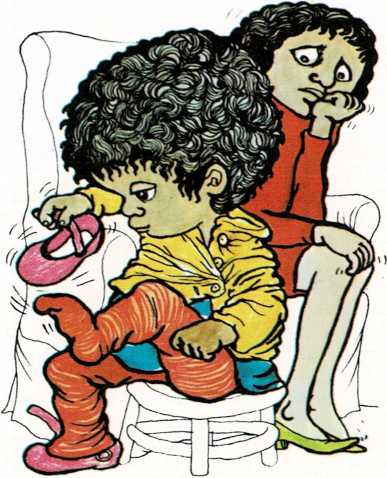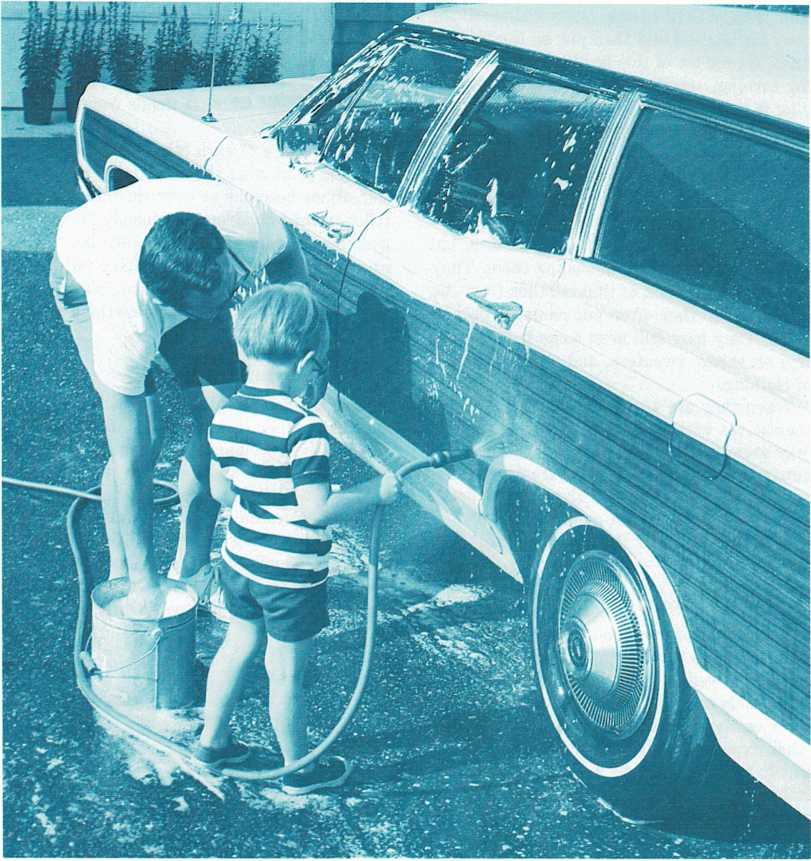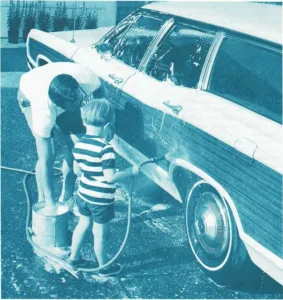Portrait of the preschooler
The way children use tricycles says a lot about how their motor skills
are developing during this age span. When children are 3, they are
almost surely beginners on trikes. At first, they may be content merely
to sit on the seat. Then they start to experiment with the pedals, but,
in the beginning, don’t
quite get the hang of them. Sometimes they want to move forward, but the
trike goes backward. Then for a while, they ride along rather
deliberately, proud of their movement and steering. Soon, they discover
how fast they can go. They don’t slow down for turns. They ride as close
to people as they
Even though preschoolers may be together, they may not always play
together. Two may make sand cakes, while a third plays alone.

can. If they have to stop, they wait until the very last second and then
put on the brakes hard. Every bit of this hard pumping, daring turning,
smart steering, and skilled stopping is accompanied by noises—motor
noises of “brr-brr” and horn noises “honk, honk.”
Parents can also see progress in motor development as the preschoolers
gradually acquire greater skill in dressing themselves. By the time they
are 3, children can unbutton the front and side buttons of clothes, but
they have a hard time buttoning them. They cannot tell the back of their
clothes from the front, and so they often put pants on backward. They
may still need some help in putting on shirts, sweaters, and other
articles of clothing.
When they are 4, preschoolers dress themselves with little help, but the
process may seem to take forever. They can now button and unbutton side
and front buttons on their clothes. They are also able to distinguish
between the front and the back of their clothes and put them on
correctly.
Social development
The way two preschoolers play together on their trikes shows changes in
social growth as well as motor development. Two 3-year-olds may simply
like to be near each other on their trikes. They may bump each other
experimentally with little, testing, hardly touching bumps. A little
laughter, a little giggling often go along with the bumps and touches,
but there is seldom any great flow of words. One of the youngsters may
decide to head off somewhere; to some near destination, because at this
age children do not yet go far afield. The other will probably follow,
but not always right away. A little thought has to go on first. The
social response is not yet quick, sure, and certain.
As they near their fifth birthday, these same two youngsters are very
different. There is almost no “just sitting.” They are sure to be on the
go. There are almost no quiet times.
The 3-year-old business of one child’s going off on some venture while
the other tentatively follows is out. Now they play together. They have
plans and they talk about them, sometimes with a few spats and
brief fallings-out. Once they cook up an idea, each one is likely to
carry it out with modifications that make the plan his or her own. These
older preschoolers have grown into social creatures who get thrills from
being with each other.
The pleasure of each other’s company, the excitement of what they are
doing together sometimes becomes so overwhelming that toilet-trained
children occasionally “forget” and come home wet. In their own list of
priorities, these preschoolers have put first things first. Being with a
friend, playing with a friend—now that is something new.
Language development
Intermingled closely with social development is another major advance of
preschool years—the development of language. By the time children are
about 4, they become chatterboxes who never shut up.
Preschoolers do not simply chatter, however. Their talking involves all
the parts of speech, gradually longer sentences, and a greater clarity.
Language development and social development aid one another. Most

It takes time, but preschoolers eventually learn how to dress
themselves—shoes and all.

Preschoolers, both boys and girls, like to work along with their
parents on such jobs as washing the family car. Imitation is one way a
preschooler learns.
preschool children still fight at times, of course. If they are greatly
provoked, they may even bite and kick. But they gradually learn to use
words to settle their differences and their disputes.
The great growth in a preschooler’s speech can trouble adults.
Preschoolers seem to talk too much. They frequently interrupt because
what they have to say is still the most important thing in the world to
them. They often talk too loudly. Commonly, around the age of 4, they go
on a spree of
name-calling and experimenting with nonsensical singsongs.
One other occasionally annoying characteristic of the preschooler is a
never-ending stream of questions. Inquiries increase and become more
complex fi’om about 3 years on. The questions Why? and How come? are
asked more often, as well as questions such as, “Where do babies come
from?” Preschoolers are trying hard to understand what objects and
relationships are, how things work and what things are for.

